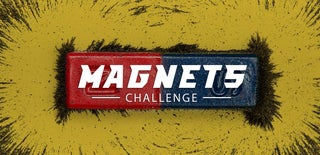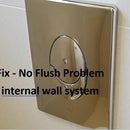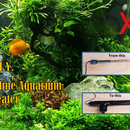Introduction: Water/Feed Level Indicators
In this instructable I'll show you how I made a water level indicator without the use of micro processors, micro controllers, Raspberry Pi, Arduino etc.
When it comes to electronics, I'm a complete "dummy". I do use some electronic components in the build, i.e. reed switches, resistors and LED's, however they are all very basic. My idea here is nothing new. For those not so electronically minded like myself, a reed switch is an electromagnetic switch used to control the flow of electricity in a circuit. They are made from two or more ferrous reeds encased within a small glass tube-like envelope which become magnetised and move together or separate when a magnetic field is moved towards the switch. There use is quite widespread across many fields. In the automobile industry for example, they are used to check brake fluid, oil levels and the like. The following link is a good representation of the use of reed switches, and is what I have modelled my instructable on here.
In the video, the switches are only activated when the vessel is either full or empty. I wanted a constant indicator displaying what the level is at any given time, so I have used multiple reed switches to achieve this outcome.
The idea is to have a 15mm PVC pipe mounted within the water tank with the reed switches inserted inside this pipe from below. I found that a 20mm PVC pipe off-cut fits snuggly over the 15mm pipe like a collar. This will be incorporated within a float, sliding up and down the 15mm pipe with the changing water level. Magnets attached within the float will activate the reed switches inside the pipe.
Supplies
All components were relatively cheap and easily sourced.
4 neodymium Magnets - I got mine at the local hardware store.
Reed switches, 5mm LED's , 270 Ω resistors and PCB - local electronics store or online
Small plastic container for the float.
Various lengths of PVC pipe and fittings.
CAT Computer cable or similar. Mine was left over scrap.
Empty jam jar.
Step 1: Reed Switch Assembly
I decided that it would be practical to mount the reed switches on a rigid wire rod for two reasons, to make it easier to push the assembly up into the 15mm PVC pipe and also to act as a backbone to prevent slumping as the reed switch structure will be standing vertical within the pipe. Before mounting the reed switches, I experimented first, by running a magnet along the length of a reed switch and found that there was a dead patch in the centre where the two spindles meet, breaking the circuit (see above). I wanted at least two rows of LED's to be illuminated at all times, so I soldered the switches onto the wire rod in a staggered pattern as shown. I had plenty of redundant cat 5 cables lying around from the days before wireless technology became mainstream so used these to wire up my LED's. These cables have 8 wires within, so I stripped two out of another as I needed ten. I envisaged having ten rows of LED's in my display (4 green, 3 yellow, 2 orange and 1 red). In order to have the 150mm PVC pipe hold a decent volume of water, I went with 30 reed switches, wiring them up in parallel in groups of three with each group connected to a row of LED's. For the last 3 switches (at the bottom), I wired the first two together which would illuminate the row of red LED's, the third switch would ultimately connect to my strobe light. After working out the required length the cables, I threaded them all (including the one for my strobe light) through an 8mm clear vinyl tubing for protection as well as for keeping them all together. The rod will be connected to the negative or neutral wire.
Step 2: Wiring Up the LED Circuit Board
Before I started, I knew nothing about wiring up an LED, other than it needing a resistor to prevent the light from blowing, and that the resistor had to be connected to the +'ve leg. I downloaded this app, and used it to calculate the resistor required for each LED "LED Resistor Calculator". I bought myself a small PCB and mounted the resistors first, spacing them evenly along the board. I had to break the circuit with a Dremel in a couple of spots to isolate the LED circuits from each other. You can see the break just below each resistor. I soldered the 10 wires coming from my reed switches, taking care to connect each one in the correct order to the relevant LED. To make life easy should I ever have to dismantle my setup for maintenance sometime in the future, I decided to make a break in the wires between the reed switches and LEDS. I had some 25 pin plugs from an old computer cable lying around which was ideal for this purpose. For aesthetic reasons, I sprayed the reverse side of the PCB black before mounting the LEDS x 2 in parallel on the newly painted side as shown.
Step 3: Magnetic Float
For the float, I used a small food container which I nicked from the wife's kitchen cupboard. Hopefully she wont notice it missing, anyhow my need was greater than hers. I cut a 45mm length of 20mm PVC pipe which matched the internal height of the container and super glued 4 neodymium magnets to the bottom of the offcut as shown. This step is fairly tricky due to the attraction between magnets. Best do one at a time, holding each in place until the glue takes hold. I mounted them with the same polarity facing inward/outward so as the magnets would act in unison, creating a donut shaped magnetic field. There aren't many glues that would stick Polypropylene (PP) to Polyvinyl Chloride (PVC), but "Loctite Super glue for all plastics" did the trick. Once dried, I applied plenty of silicone around the magnets to make sure they didn't go anywhere and sealed the lid, again with silicone to make the unit completely airtight. I found that I needed to put a pinhole in the lid and re-glue as there was a pressure build up inside the enclosure while the glue was curing, causing a breakout along the seal. I then hollowed out the top and bottom of the container where the internal pipe ends met allowing the float to then fit over the 15mm pipe containing the reed switches.
Step 4: Mounting the LED Circuit Board
Because my light display will be mounted externally on my chicken coop, I needed to provide some sort of protection from the weather. I decided to go with an inverted jam jar. I thought I would cut a slot in a wooden plug that would fit into the mouth of the jar to support the PCB in an upright position. I didn't have the appropriate size hole saw on hand, so went with what I had (slightly larger) and then sanded it down to make a snug fit. To mount the jar, I cut a block of treated wood to fit through the lattice on my coop which of course is only relevant to my installation.
Step 5: Water Tank
For my water tank, I used a length of 125mm PVC pipe, cut to match the length of my reed switch assembly. This sits external to my coop and feeds into an internal 100mm PVC pipe that has the water nipples fitted for the chooks to drink from. The hole in the centre of the bottom is where I fit my reed switch assembly, the other outlet gravitates to the inside water tank. The magnetic float fits over the reed switch assembly, free to float up and down with the level of the water.
Step 6: The Big Test....
Step 7: Duplicating the Setup for My Feed Bin
Being impressed with my water level indicator, I decided to ditch what i had already created for the feed bin ( in a previous instructable) and set about using the same setup for the feed as well.
I used the same principal, fixing the internal 15mm pipe containing the reed switches through the outer pipe elbow as shown. Both the feed and water indicators connect to the strobe light which is activated via the bottom reed switch in either unit.
Step 8: My Strobe Light in Action to Really Catch My Attention
So as not to bore you all to tears, I've sped up the action into a 20 second video.
Step 9: Circuit Diagram
Here's the circuit diagram of how it hangs together. Hope it can be read by those interested.
Step 10: Enhancements in Hind Sight.
Spend some time in spacing the reed switches as I have two, sometimes three LED's alight at any given time. By spacing the LED's further apart, I could have gotten away with fewer reed switches or alternatively, run with the same number of switches and increased the volume of the water tank.

Second Prize in the
Magnets Challenge













